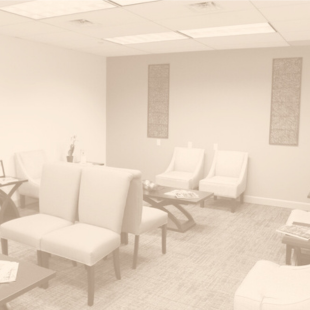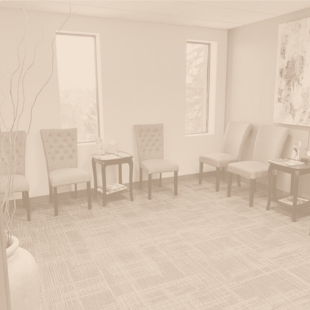Thigh Lift Surgery
Thigh Lift Surgery Process
& Ideal Candidates
A Thigh Lift is a surgical procedure used to reshape the thighs by removing excess skin and sometimes fat, for improved contour and smoother skin. This may be due to a genetic predisposition or retained adipose tissue despite weight loss. Many will complain about the inability to wear certain clothing because of the differences in their proportions. Skin breakdown and chaffing to the inner thighs are common concerns for patients interested in a thigh lift.
What To Consider
Expectations
Surgical Risks & Recovery
Long-Term Maintenance
Schedule Your Thigh Lift Consultation
During your consultation, our thigh lift surgeon Dr. Antimarino will walk you through a series of questions to determine your concerns, goals and expectations. Dr. Antimarino will discuss with you any medical conditions you may have or treatments you are going through, what medications you may be taking, and any previous surgeries. Be prepared to discuss outcomes of a thigh lift procedure and have the doctor take photos of your legs and thighs for a more accurate evaluation.
Pre-Op Care
Depending upon a patient’s age and medical condition there may be preoperative laboratory testing required. This will need to be completed within 2-4 weeks of inner thigh lift surgery and is typically covered by the patient’s insurance. Patients are asked to maintain their usual activity level and body weight from the time of consultation to their surgical date. Patients are required to stop smoking, vaping, and the use of nicotine patches, gum, and marijuana one month prior to surgery and a minimum of one-month post-surgery. Patients are also required to stop using weight loss medications 2 weeks prior to their surgery. Surgery may be canceled if guidelines are not followed.
Frequently Asked Questions
Who is a good candidate for a thigh lift?
Good candidates generally have excess skin and possibly fat deposits in the thigh area due to aging, weight loss, or genetics. They should be in good overall health and have realistic expectations about the procedure’s outcomes.
What can I expect during the recovery period?
Recovery from a thigh lift typically involves swelling, bruising, and discomfort, which can be managed with prescribed pain medication and compression garments. Most patients can return to light activities within a week or two, but strenuous exercise should be avoided for several weeks.
Will a thigh lift leave noticeable scars?
Yes, a thigh lift will result in scars along the incision lines, which are strategically placed to be as inconspicuous as possible. Over time, scars usually fade but may remain visible. Dr. Antimarino can advise on scar care and ways to minimize their appearance.
How long do the results of a thigh lift last?
The results of a thigh lift can be long-lasting, especially if you maintain a stable weight and lead a healthy lifestyle. However, factors such as aging and significant weight fluctuations can affect the longevity of results.
Are there any risks or complications associated with a thigh lift?
Like any surgical procedure, a thigh lift carries risks such as infection, bleeding, poor wound healing. It’s important to discuss these risks with Dr. Antimarino and follow post-operative instructions diligently to minimize complications.
Can a thigh lift be combined with other procedures?
Yes. A thigh lift can often be combined with other body contouring procedures such as liposuction, tummy tuck (abdominoplasty), or arm lift (brachioplasty). Combining procedures can reduce overall recovery time and achieve more comprehensive results.
Testimonials
What Our Patients Are Saying
Dr. Antimarino obviously knows what he’s doing. His team is great and I couldn’t recommend his practice anymore. He’s extremely open to communication after you leave the office and answers any questions. I’m so glad I chose him as my surgeon and would recommend him to anyone considering cosmetic surgery!
Shadyside Patient
My experience was all around phenomenal. Dr Antimarino was personable and professional.
Health Grades
Great place to go for all services! Dr. Antimarino is an amazing surgeon that puts a premium on patient experience and outcomes!
Surgery & Post-Op Care
A thigh lift is an effective way to remove excess skin and fatty tissue from the inner thigh, resulting in a better overall contour. When the excess skin is isolated to the upper, inner thigh, the incision can be placed in the groin crease extending to the buttock crease. This will give the inner thigh a smoother, more toned appearance.
If the excess skin involves the length of the inner thigh, then an incision extending vertically down the inner thigh can be added to the groin crease incision. This allows for better tone and contour of the entire inner thigh.
Thigh lifts are performed as an outpatient procedure in an accredited surgery center under general anesthesia.
Drains are routinely used postoperatively for approximately 3-4 days. Compression stockings are used for 3-4 weeks. Most patients may return to work in 2 weeks and resume exercise in 3-4 weeks.
Related Procedures
Our Locations

Shadyside
5301 FIFTH AVENUE, SUITE A,
PITTSBURGH, PA 15232
GET DIRECTIONS
Fri: 8 am – 4:00 pm

Monroeville
117 FOX PLAN ROAD, SUITE #300,
MONROEVILLE, PA 15146
GET DIRECTIONS
Fri: 8 am – 4:00 pm

